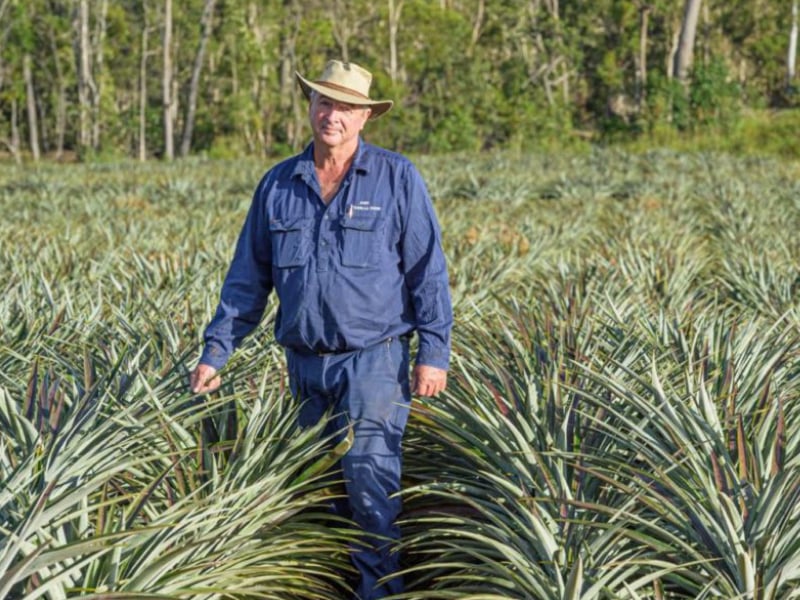
This investment is educating Australian pineapple growers on the many benefits of integrated crop protection and what’s needed to produce more fruit in an eco-friendly way.
The challenge
To remain competitive, Australian pineapple growers need higher yields, lower production costs, and better fruit quality – all while reducing their use of environmentally harmful pesticides and runoff.
Meet John
John Steemson and his wife Linda operate Littabella Pines pineapple farm north of Bundaberg. Given its proximity to the Great Barrier Reef, water quality is a top priority, and they’ve been part of this program since 2019.
“Projects like this are essential to ensure agriculture generally has the ability to change when change is needed and remain profitable in forever-challenging circumstances,” says John.
“For us, this is an ongoing process with a single crop of pineapple, with outcomes taking four-and-a-half years, but we’re already establishing some economic benefits and it’s changing many of our farming practices.
“We’ve incorporated many of the findings into our operation, which has led to much lower rates of pre-plant fertiliser.”
The trial area on John’s farm was divided into three groups: full, medium, and low rate of pre-plant fertiliser application. “Visually, there was no apparent difference in plant and fruit size between the three rates,” says John. “I’m now a firm believer that we can certainly apply what the crop needs nutritionally in a foliar manner in smaller amounts, more regularly throughout the growth cycle of the plants,”
Other improvements to John’s operation as a result of the program’s findings include fumigation of identified pest areas and changes to his farm’s layout, which has reduced nutrient and sediment losses.
“All of this has improved profitability,” says John. “The findings of these research projects will have long-lasting benefits to the pineapple industry and potentially other crops as well.”
The approach
Beginning in 2018, this program has implemented many measures to ensure the long-term viability of the Australian pineapple industry, including updating of the industry’s best practice manual, the creation of videos and fact sheets for growers, on-farm demonstration sites, integrated crop protection workshops, and research into pineapple plant nutrition and pest and disease management.
The program also produces a quarterly industry Pineapple Press e-newsletter and funds the upkeep and management of the pineapple industry website. It’s also responsible for the distribution of important industry communications, and the organisation of field days, like the annual Pineapple Field Day.
These field days attract about 80 per cent of growers each year and are a key showcase for research and technology, which makes up the Pineapple Integrated Crop Protection Program. These will continue to be an effective mechanism for promoting the uptake of new technologies and best management practices going forward.
The impact
Although the program will run through until 2023, 17 demonstration trial sites have already been established as part of this program, covering the research areas of site selection and drainage, ground preparation, fallow management and bed formation, pre and post-plant nutrition management, integrated pest and disease management, and management of erosion and sedimentation.
One of these trials has discovered a new long residual broad-spectrum herbicide for the control of a number of grass and broadleaf weeds as a pre-plant application. This is now undergoing further research.
Ultimately, it’s hoped the program will result in improved pest management, greater productivity and sustainability, attract new growers, and retain existing farmers through increased profitability.
